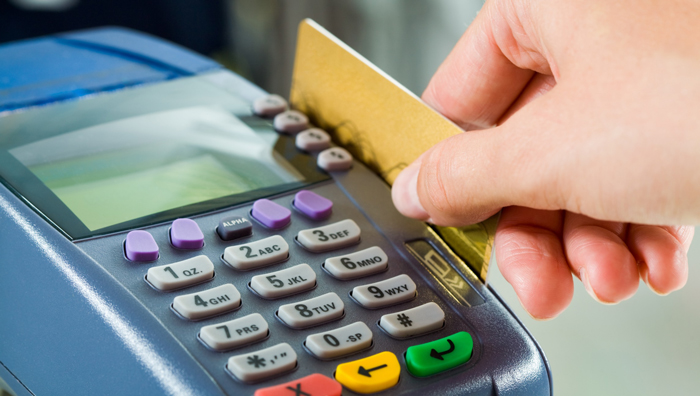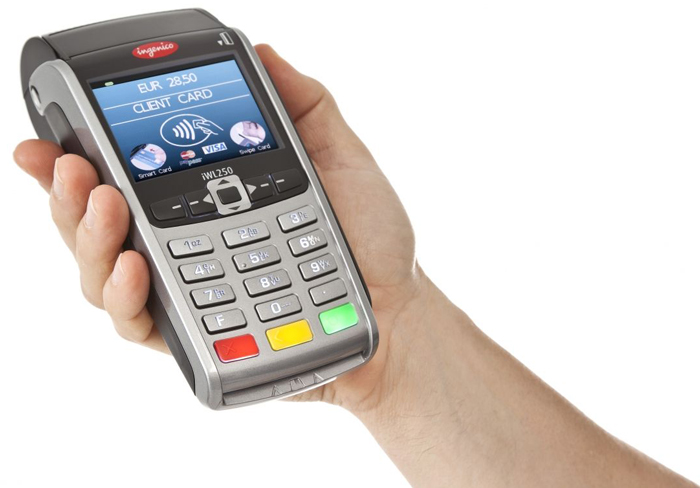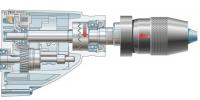How does a card payment terminal work?
Small business is a representative of the large client segment of the banking companies market. And, even if such a market does not have the largest turnover of goods and money, it is distinguished by similar demands for technology and service. And one of the mandatory payment elements is terminals. But how does a payment terminal work for paying for goods or services with bank cards?
What are POS terminals?
In the overwhelming majority of cases, the main goal that POS terminals adhere to is the implementation of settlement and cash services. Installation of POS terminals, as well as collection, payments to counterparties and other elements constitute settlement and cash services.
Using payment terminals, a store can debit funds from the customer’s bank card account and transfer them to the account of the selling company. Payments using plastic cards are one of the integral parts of modern human life. At the moment, almost all existing services and stores not only know what the terminal looks like, but also use it to sell goods and services. Such terminals are called POS (Point of Sale), or, if translated into Russian, point of sales.
For the convenience of users, at those points of sale where card payments can be accepted, at the entrance or near the cash register there are specialized stickers with the logos of the payment systems that this cash register accepts.
The presence of a payment terminal attracts customers and increases the organization’s profit
Operating principle
It is important for both the client and the seller to know how the card payment terminal works. Any payment terminal works according to the following scheme:
- The client selects goods or services and indicates his intention to pay with a bank card.
- The merchant or customers then insert the card into the POS terminal (or touch it to the terminal), activating it.
- Information about the card is sent to the processing center.
- The computer verifies the account balance on this card.
- The required amount is transferred to the acquiring bank.
- A slip is printed - a payment document with data on the financial transaction.
- One copy goes to the cashier, and the second to the buyer.
- The bank gives the money to the company, transferring it not to its account, minus the mandatory commission.
These steps are followed for any payment by bank card.
In this case, the store, intending to activate the acquiring bank services for subsequent use, has the right to:
- connect the cash register to the payment system;
- rent one or more POS terminals;
- use your own terminal to pay by bank transfer.
Today there are many types and varieties of POS terminals, which differ from each other in various parameters, including size, cost, operation algorithm and number of components.

The type of POS terminal depends on the retail facility
Types of POS terminals by design
There are three types of POS terminals in total, if you look at them from the point of view of the layout of the components. These are monoblock and modular terminals, and it is through them that various processes are carried out that determine how to use the card payment terminal, how much to withdraw and which bank to send to.
Monoblock
Monoblock terminals are designed in such a way that all equipment is located in a single housing. They are installed where there is little throughput. These could be boutiques, small department stores or kiosks.
Modular
Modular POS terminals consist of several modules connected into one network. However, some modules may have a separate housing. For example, a barcode scanner, keyboard, printer and other components may be located separately. You can distinguish a terminal consisting of modules from a monolithic one only by the presence of several cables connecting the components into a single system.
The advantage of such a system is that the modules can be located at some distance from each other, which makes the buying and selling process more convenient for the client and the seller. In addition, depending on the type and modification of the modular system, it can be equipped with various elements.
Modular POS terminals are suitable for places where there are a lot of customers. These are grocery stores and hypermarkets.
Dispersed-modular
The only difference from the modular system is that here you can move components over a distance of 5 meters. Used in food establishments - restaurants, cafes, public catering, fast food, etc.
Types of banking acquiring and POS terminals
Trading terminals are installed and used in various trading, service and other companies. They can be found in stores, hairdressers, hotels and other similar establishments. A distinctive feature of this type of POS terminals is that there is direct contact between the selling party and the buying party.
Another feature that is more pleasant for the selling side is that in order to use the terminal in trade, it is necessary to conclude an agreement between the seller and the terminal supplier. According to this agreement, the bank supplies the store with:
- the terminal itself;
- other equipment;
- software;
- Consumables;
- opportunity to receive training free of charge.
The store owner undertakes under the contract to create the necessary conditions for the installation of devices for paying for goods and services through a bank card. All these and other features made the terminal popular.

The tariff and type of acquiring depends on the type of trade object and the income received
Internet acquiring
A characteristic feature of this type of acquiring is the absence of any direct contacts between the selling and buying parties. In online mode, customers can pay for services and goods in a simpler and faster way using their own bank card in any online store. In order to do this, just enter your card number, expiration date, as well as other data, including CVC2.
In 99% of cases, a certain amount of funds is written off instantly, after confirmation of the transaction via SMS message.
Mobile acquiring
Another type of POS terminal based on its operating principle is mobile acquiring. At the same time, a POS mobile terminal is installed, which is necessary to pay for services and goods with a bank card. This terminal is also called mPOS.
Externally, it is a card reader that connects to the gadget and makes it possible to transfer funds from the client to the seller using the application.
The use of terminals in trade in the process of paying by bank card is convenient not only in the store, but also in courier services, medical practice, cargo transportation and other similar services.
mPOS is suitable for those entrepreneurs whose turnover is insufficient to use standard POS terminals. In view of the problems with the implementation of business in Russia in the early stages, mPOS is becoming increasingly popular and the optimal solution, so you should choose such a payment terminal.
Operating principle of a mobile POS terminal
Everything here is as simple as in standard POS terminals. An entrepreneur or store purchases a special card reader and installs the application on the gadget. After registration, the store will have a real mobile terminal that runs on 3G and is capable of accepting cards to pay for services and goods.
Price
The cost of the card reader itself will depend on the company’s requirements, but the minimum price is three thousand rubles. There are companies that either offer to get card readers for free, or compensate the cost with a commission.
The average market commission can vary from 2.5 to 2.75 percent of the transaction amount, so it does not depend on daily or monthly turnover.
What types of mPOS terminals exist
Connectable via various interfaces. These can be Bluetooth, mim-jack and USB. The most budget models in this regard are those that connect to the head unit via a mini-jack or audio jack. As for Bluetooth models, they allow full authorization followed by entering a PIN code during payment.
Reading magnetic stripe, CHIP or combined modifications. In Russia, almost all devices are sold in such a form that they can work with magnetic strips located on cards.
Analog and digital. Encryption modifications are capable of encrypting information from the card before transferring it to the phone.

Using POS terminals has not only advantages, but also disadvantages
Advantages and disadvantages of payment terminals
Using payment terminals when doing business is an excellent way to conduct commodity and cash flows. The use of such systems is justified by several advantages:
- terminals are sold at a low cost (especially for mobile terminals), which allows you to save money even at the stage of implementing the trading system;
- terminals, depending on the type, differ in mobility;
- increased level of security of the transaction;
- the ability to sell goods and provide services, as well as work and conduct business around the clock;
- payment terminals can be quickly designed and implemented into your working project, and this is useful for doing business due to the small commission and minimal resources. And in the case of mPOS terminals, you just need to have a smartphone and a card reader.
However, using POS payment terminals also has its disadvantages:
- not all banks support delivery at a sufficient level;
- there is some distrust of any POS terminals from bank card holders;
- lack of guarantee of high-quality and uninterrupted operation in case of equipment problems;
debt payment procedure (applies to mobile payment systems).
For those individual entrepreneurs and companies whose turnover exceeds 1 million, payment terminal manufacturing companies can provide discounts or interesting conditions for cooperation.
Some nuances of using POS terminals
Using payment terminals for card payments allows small businesses to open up a large number of different opportunities, including such as:
- Increased sales. As international statistics show, after installing POS terminals, sales volume increases by an average of 30 percent. This increase in the profitability of the establishment can be explained very simply - bank card holders are more inclined to make high-value purchases.
- Cooperation. Companies that connect a POS terminal can begin mutually beneficial cooperation with the bank that provides acquiring.
- The use of terminals in trade eliminates the appearance and distribution of counterfeit banknotes in the company.
- Opportunity for free training and advanced training for your employees.
In conclusion, it should be noted that installing a classic, improved or mobile POS0 filter will be beneficial for both small businesses and banking companies. More than half of the market share of acquiring in Russia is divided between several large participants - Russian Standard, VTB, Sberbank and others. These companies account for about 74 percent of the Russian market share.
But before purchasing and installing a terminal, you need to study the tariffs and available offers, as well as the features and advantages. Based on the requirements and specifics of your business, you can choose the most profitable and prompt offer.
With each new year, an increasing number of stores, individual entrepreneurs and other small business legal entities join the general system of non-cash payments when selling services and goods. At the same time, companies can receive even more profits and additional profitable opportunities.




